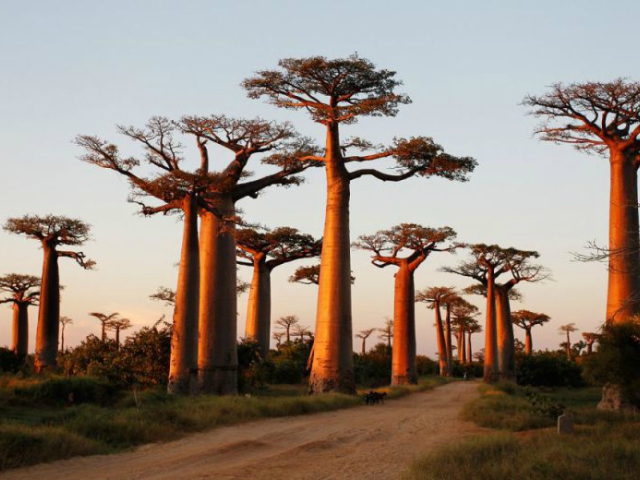African Baobab Tree | 01 Sep 2020
Why in News
A recent study published in the journal Scientific Reports has found that the tree 'African Baobab' has 168 chromosomes. Previous studies estimated that the tree has between 96 and 166 chromosomes.
- The study will be useful in genetic conservation efforts.
Key Points
- Type of Trees: Baobabs are deciduous trees ranging in height from 5 to 20 meters.
- Deciduous forest is a vegetation composed primarily of broad-leaved trees that shed all their leaves during one season.
- Found in: The African baobab (Adansonia digitata) is one of the nine species of baobab and is native to mainland Africa. They are also found in African Savannah.
- The African savanna ecosystem is a tropical grassland with warm temperatures year-round and with its highest seasonal rainfall in the summer.
- It is characterized by grasses and small or dispersed trees that do not form a closed canopy, allowing sunlight to reach the ground.
- Oldest Known Angiosperm Tree: Carbon-14 dating places the age of a specimen of African baobab in Namibia at about 1,275 years.
- Tree of Life: As African baobab is a succulent, which means that during the rainy season it absorbs and stores water in its vast trunk, enabling it to produce a nutrient-dense fruit in the dry season when all around is dry and arid.
- Uses: Baobab trees can live for more than a thousand years and provide food, livestock fodder, medicinal compounds, and raw materials.
- Threat: Since 2005, 9 of the 13 oldest African baobab specimens and 5 of the 6 largest trees have died or suffered the collapse and death of their largest or oldest stems, that may have been caused by the effects of climate change.
Angiosperms
- Angiosperms are a taxonomic class of plants in which the mature seed is surrounded by the ovule (e.g. apple). This group is often referred to as hardwoods.
- Angiosperms are trees that have broad leaves that usually change color and die every autumn. Oaks, maples and dogwoods are examples of deciduous trees. Some angiosperms that hold their leaves include rhododendron, live oak, and sweetbay magnolia.
- Gymnosperms are a taxonomic class that includes plants whose seeds are not enclosed in an ovule (like a pine cone). Gymnosperm means ‘naked seed’. This group is often referred to as softwoods.
- Gymnosperms usually have needles that stay green throughout the year. Examples are pines, cedars, spruces and firs. Some gymnosperms do drop their leaves - ginkgo, dawn redwood, and bald cypress, etc.
Carbon-14 Dating
- Also called radiocarbon dating, it is a method of age determination that depends upon the decay to nitrogen of radiocarbon (Carbon-14).
- Carbon-14 is continually formed in nature by the interaction of neutrons with nitrogen-14 in the Earth’s atmosphere.
- The neutrons required for this reaction are produced by cosmic rays interacting with the atmosphere.

